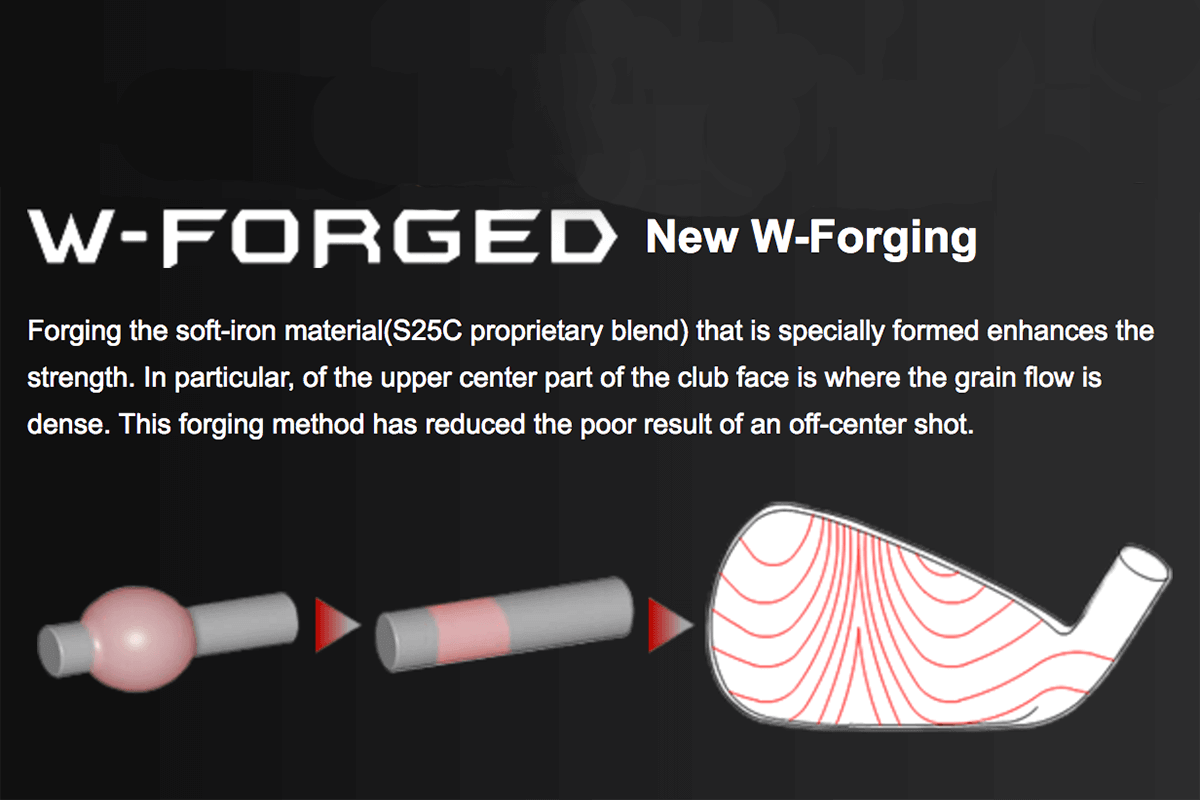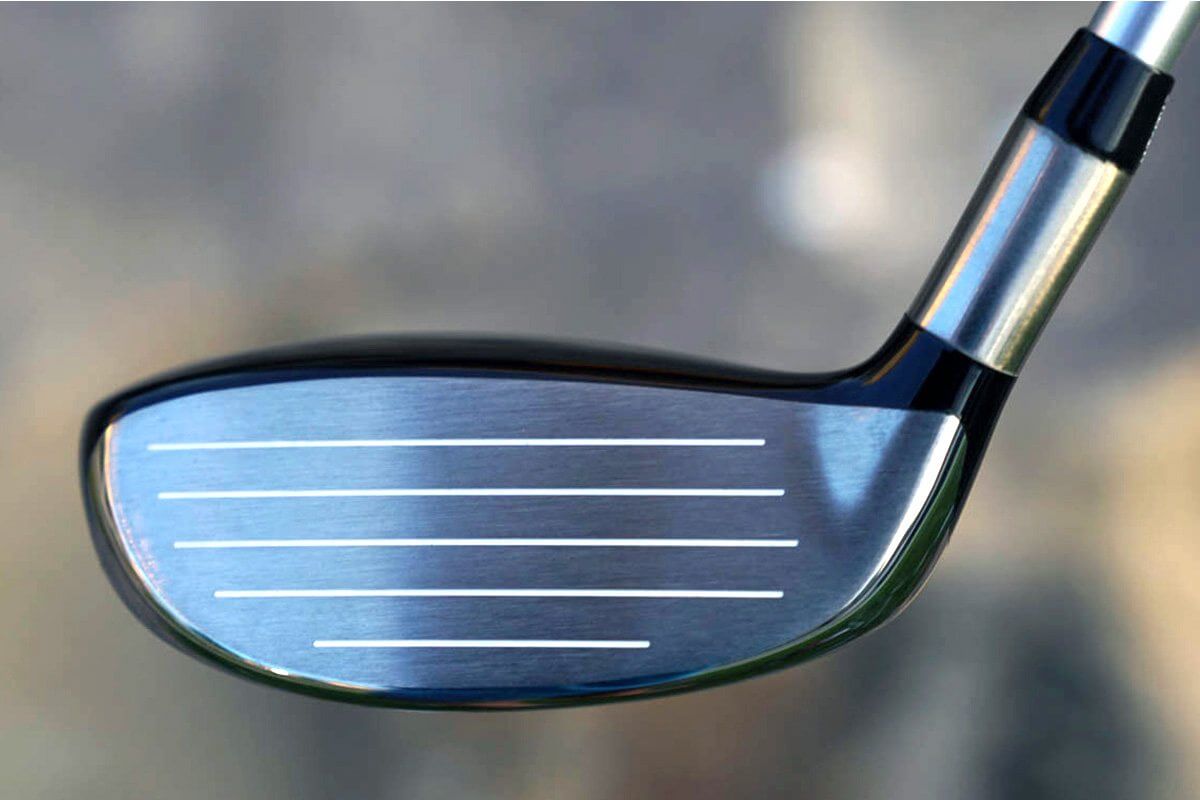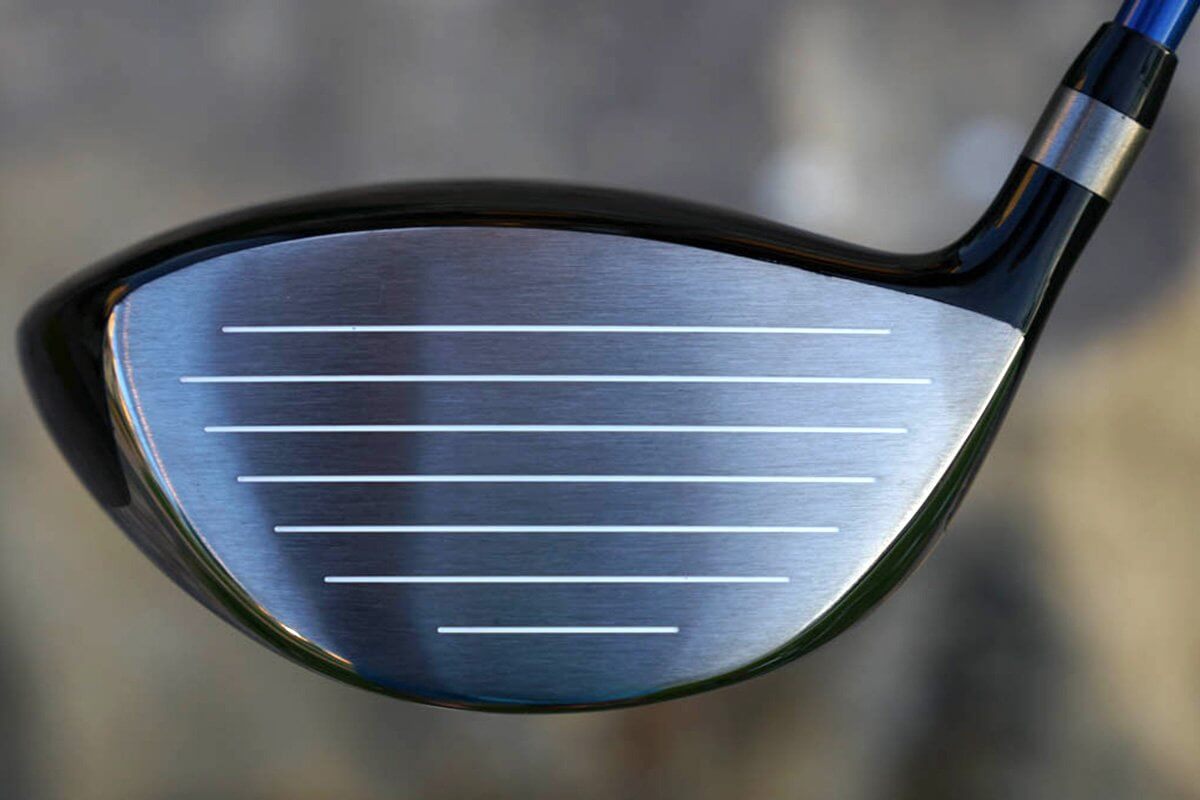This year MyGolfSpy is showcasing a variety of Japanese equipment companies in an effort to familiarize readers with these brands and what each has to offer. In case you missed our coverage of Miura and Vega, take a peek.
We continue our tour with Honma Golf.
HONMA – ORIGIN STORY
The general theme of small, cottage industry turned significant JDM player is very much a part of Honma’s DNA. In 1958, the Honma brothers opened a driving range in Tsurumi, Yokohama. Five years later they formed the Honma Golf Club Manufacturing Company. The next three decades witnessed significant growth and expansion of manufacturing facilities in Sakata as Honma extended its reach into brand apparel, carbon graphite shafts, and a more extensive lineup of golf equipment.
The story changes course in the period following the boom (but mostly bust) of the Japanese golf course market in the 1990s. The decline left Honma a financial hot mess. The company filed for bankruptcy in 2005; in 2009 it was purchased by a Chinese businessman and golfing enthusiast, Liu Jianguo. In October 2016, the company was taken public with a goal of raising a net $162 Million (US Dollars) to broaden its reach in China and North America.
In 2018, Honma will celebrate 60 years of producing what it describes as “golf clubs that combine exceptional functionality and refined sensibilities,” but more so this anniversary is a line of demarcation as Honma again tries to succeed as a publicly held and traded company.
A quick scan of other publicly traded golf brands paints a rather bleak picture. Acushnet (Titleist) stock has struggled largely because of increased competition in the ball market, which accounts for over 50% of Titleist’s business. When Nike couldn’t leverage Tiger Woods and Rory McIllory to sell any meaningful volume of golf clubs, it pulled out of the hardgoods business. Most recently, Adidas finally sold TaylorMade, which earlier this year lost its position as the #1 metalwoods brand in golf (based on retail sales). The golf brand was effectively a 3-bottom plow on an otherwise healthy machine.
Given the lack of readily available success stories, the path to sustainable profitability is anything but a guarantee.
LANDSCAPE
There’s always risk involved in taking a company public. This is particularly true for golf equipment companies who play in a space where the global market is relatively stagnant, if not contracting slightly.
Potential stockholders need to believe they are investing in something which is likely to go up in value, and share prices increase largely when companies experience substantial growth. Honma stockholders are banking on the idea that growth will come from China and North America. On paper, there is some reason for optimism. Both markets appear to have a voracious appetite for what Honma can provide, but theoretical success neither pays the bills nor satisfies shareholders. More importantly, whatever market share Honma can capture will have to come from existing golfers, as the U.S. market is at best stagnant and shows no obvious signs of rapid growth possibilities in the short run.
Pressures can be different for publicly held companies because of transparent economic data – quarterly earnings, revenue, profit and share price all drive the demand for growth. Growth is what feeds investors, and investment is what fuels public companies.
As such, Honma is already taking a more aggressive approach to product distribution, but don’t confuse its availability at big box stores like PGA Superstore and Golftown with a volume selling strategy. Adam Sheldon, General Manager of Honma Golf, states, “We won’t fight low price points to gain market share…using cheap tooling and cheap technology equals cheap prices.”
Unlike other JDM companies, Honma offers a full line of clubs and a bevy of softgoods (shoes, hats, balls, bags, gloves and more) which are available in a variety of locations, including Honma exclusive storefronts. If you’re looking for a parallel, think Apple stores, where the complete line of products and services are available in a one-stop shop.
If Honma has a reputation that extends beyond borders, it’s a good bet terms like golf aristocracy, and the world’s most expensive clubs feed any perception that exists in North America. Case in point – the $3755 Honma Beres S-05 driver given to President Trump by Japan Prime Minister Shinzo Abe earlier this year.
While it’s true that Honma makes some alarmingly expensive clubs – and no company bedazzles quite the way Honma does – this isn’t the medium by which it plans to grab the attention of the rest of the world.
CURRENT LINE
Honma has several lines of clubs and shafts which are categorized and priced according to the number of stars. More stars mean higher costs, but also gets you tighter tolerances, cutting edge technology, and materials typically reserved for jewelry (think gold and platinum). The BeZeal and Beres lines (higher star rankings) lean toward the game-improvement crowd, and the reasoning behind this is the strong positive correlation between disposable income and handicap – when one is high, the other is as well. This isn’t universally true, but Sheldon states, “Most game improvement products are price driven, not performance driven.”
For Honma, multiple lines allow it to treat each of nine different player types it recognizes as separate categories. For each, it produces equipment specific to that demographic. This gives Honma the breadth to cover everyone from the Tour-level professional to those who spare no expense to ensure they have the absolute best equipment Honma can create.
Tour World is Honma’s most-affordable line, so it would be easy to fall into the trap of assuming it’s somehow lacking or stripped down – and that would be categorically untrue. In fact, this is the line played by Honma’s Tour staff and developed with their direct input. The low-hanging fruit analogy would be a date with a one-star supermodel. It’s still a date. And it’s still a super-model.
Honma takes great pride in it’s Japanese heritage, which makes it a bit odd that a portion of the Tour World line is forged and assembled in China. We don’t typically think of JDM companies exporting this responsibility to China, but according to Honma, this step was necessary to meet increasing demand. Honma uses the same materials in both locations and provides a staff whose primary focus is quality control. Regardless, it’s an onerous task to be both a premier Japanese equipment company and outsource a percentage of your tour line to China.
Because the Tour World Series is the most accessible line and the one consumers are most likely to purchase, that’s where we focused our attention. If you want to get lost in detailed specs and more information than you’re used to seeing from major OEM websites, the Honma website is worth a look.
From the 737P (precision cast pocket-cavity) to the 737Vn (W-forged cavity-blade), the latest Tour World Series is simple in its aesthetics, but broad enough to cover the majority of players. The 737P is cast (not forged) and is the most forgiving/highest launching model while it’s three siblings (737V/Vn/Vs) operate as a series within a series.
The amount of offset (face progression) is the same across all “V” models, but the club head size, as well as location and distribution of cavity weight, varies. The 737Vn has the smallest cavity, and 737Vs has the most perimeter weighting. The 737V occupies the space between the two.
Each of the 737V series is “W forged” from a proprietary blend of S25C carbon steel. This unique forging process creates increased grain density in the upper center portion of the face to reduce the negative effects of shots caught higher up on the clubface.
The new forged TW-W series wedges come in six lofts (48, 50, 52, 56, 58, 60) and offer a smooth visual transition from any TW series iron. Staff player, Hideto Tanihara, was instrumental in the design, which features his preferred grind and a pronounced triangular (raised toe) shape. Additionally, higher lofted wedges leverage a larger footprint to breed confidence and more usable space on open-faced shots. Unless you need highly specialized grinds on your wedges, the TW-W series is versatile, and with the moderate bounce and precisely crafted heel/toe relief, it can do pretty much whatever you need it to.
I can’t overstate how well this series of irons and wedges performed both at the range and on the course. The feel is pleasantly balanced. Not too firm, but not squishy either. It was solid but gave the type of feedback often desired by better ballstrikers. The thin topline on both the 737V and 737Vn tricked me into thinking I was hitting a much less forgiving club; however, both offered a quality blend of playability and forgiveness. In fact, the two models are so close; it’s almost begging for a combo set. If iron play is your weakness, but you have a reasonable swing speed, the 737P is a good option. Even though it’s cast, it’s still plenty soft. What’s more is at around $165/club ($175 for the wedges), the pricing is exceptionally reasonable for this segment of the market.
The 737 Tour World fairway and utility clubs are offered in two versions – standard and compact. As expected, the compact version is comparatively smaller and geared toward players favoring workability over forgiveness. The compact version, all things being equal, will launch slightly lower while the standard model launches higher and sits square to slightly closed at address. Each model is available in several lofts, but per JDM tradition, there is no adjustability.
The TW737 drivers (445, 450, 455, 460) are titanium body construction and incorporate varied forged titanium face technologies. The 445 is the lowest spinning of the four, and in my experience was happily difficult to turn over, which is great for those of us who fight a hook or just prefer a left to right ball flight.
The 450 and 455 both use High-Density Cup Face technology, with the 450 being the more workable of the two options. The 455 has a higher MOI and is engineered to produce straighter shots than the 445 or 450, whereas the 460 is the most forgiving and highest launching option. The beauty of having four unique models is the ability to fit a multitude of player types.
Prices for Tour World Series metalwoods are more in-line with Honma’s JDM peers (Drivers – $670, Fairway Woods – $360, Hybrids – $240) but aren’t necessarily much more expensive than premium lines from major US OEMs – especially if you need to factor in costs for upgraded/exotic shafts.
Each club is paired with Honma’s proprietary Vizard series graphite shaft. Don’t mistake Vizard for a cheap made for offering. The shafts use TorayT1100 carbon fiber, which is used in other premium shafts like the Project X HZDRUS T1100. At $350/lb, the material it isn’t cheap. Suffice it to say; this isn’t your run of the mill stock shaft.
What’s different?
Honma has the heritage and lineage to tell the story of JDM quality and precise craftsmanship. It owns and controls its facilities in Sakarta, Japan and the average tenure of a Honma master craftsman is 37 years (there are about 15 of them). It has a considerable stronghold in Asia ($250 Million in sales last year), and with Hideto Tanihara’s solid play (56th in OWGR and lost to Dustin Johnson in the semi-finals of this year’s Dell WGC Match Play), it has a bit more PGA Tour exposure than its JDM counterparts.
That said, Honma doesn’t offer any unique technology or do anything that’s appreciably different to the degree that someone would choose Honma over a competitor based on those factors. It’s also potentially disconcerting for consumers who believe they’re purchasing a Japanese forged set of irons or wedges, when the reality is, they might not be.
Certainly, the Beres and BeZeal lines in all their bedazzled and opulent glory stand apart and one can argue that the “W” forging method is a differentiator, but then again every JDM claims their forging method to be the best. It’s like cheesesteak sandwich shops in Philadelphia.
With Honma, it’s partially what they do, but more so how they’re going to do it.
To date, no other JDM company has attempted to navigate the big-box distribution model and the fact you can walk into a large retail outlet and see, feel and demo the Tour World Series puts Honma in a unique position compared to Miura, Vega and its other JDM competitors.
OUTLOOK
Honma’s progress has to be measured differently because it serves two masters: the consumer and the investor. As an investment, I’m bearish on Honma and golf companies in general because the world market for golf equipment isn’t growing in any appreciable manner – and growth is what invites investment. The potential upside for any one company is mitigated by the number of competing companies and the largely fixed (if not shrinking) pool of potential customers.
That said, I’m far more bullish on Honma from a consumer standpoint. The largest hurdle faced by most JDM companies is getting its products in front of consumers and finding a medium through which to tell a story. In partnering with big box retail outlets, Honma will be more visible than its traditional competitors, and I won’t be at all shocked if sell-through on the irons and wedges is strong.
WHAT ELSE?
The words Vizard (shafts) is a mashup – not unlike Brangelina. The concept is a victorious wizard, therefore Victory + Wizard = Vizard. Personally, my first association was something along the lines of a Japanese lizard – but it’s hard to argue with wizardry.
Honma has a tour staff of 17 players, but don’t expect to see it sending out equipment with the hope of recruiting new players. At the Tour level, if you want Honma in the bag, you have to visit Sakarta and be personally fit by Honma staff.
Part of the mystique surrounding JDM equipment is that it isn’t on every corner or in every pro shop and there are those who find the exclusive and exotic nature of JDM very attractive. By going more mainstream with the Tour World line, there’s criticism Honma is diluting the brand under a narrative of volume sales. This feeling exacerbated by the outsourcing to China, which leaves some of the Tour World Series irons and wedges void of the renowned “Made in JAPAN, Sakata” stamp. Whether this ultimately makes any difference to consumers remains to be seen – and even if it’s entirely an issue of perception, many consumers perceive Japanese forgings as higher quality.
The driver design process is different in that the first models are carved from persimmon before copper molds are made using CAD software. The rest of the process requires a more hands-on approach by Honma artisans, which is largely absent from large volume operations.
FINAL THOUGHTS
Adam Sheldon fully admits the retail space is pretty much a mess and consumers are looking for a company worthy of trust. He believes Honma is such a company, but there’s a rub. Consumers can only trust a company when they’re consistently the first priority – and when you have shareholders, no one can always be the first priority. Regardless, it’s encouraging to see an acknowledgment of the issue, which is more than most OEM’s are willing to offer.
The largest question facing Honma is whether or not it can maintain status as a premium Japanese brand, which refuses a mass-production model, while simultaneously competing in a space where volume sales rule the day. For good reason, these competing philosophies don’t often co-exist, but Honma is going to see if it can make it work.
By entering the big box retail space, albeit selectively, Honma is broaching new territory and should it find any measure of success, this could be the first step in rewriting the JDM playbook in North America.
Questions? What else would you like to know?


































Karl
3 years ago
Interesting write up. How about a review of the Honma urethane golf balls (X4, TW-X, TW-S)? Especially the TW-X and TW-S are very reasonably priced. Since the Maxflis are not available in Europe, the Honmas are a good alternative.